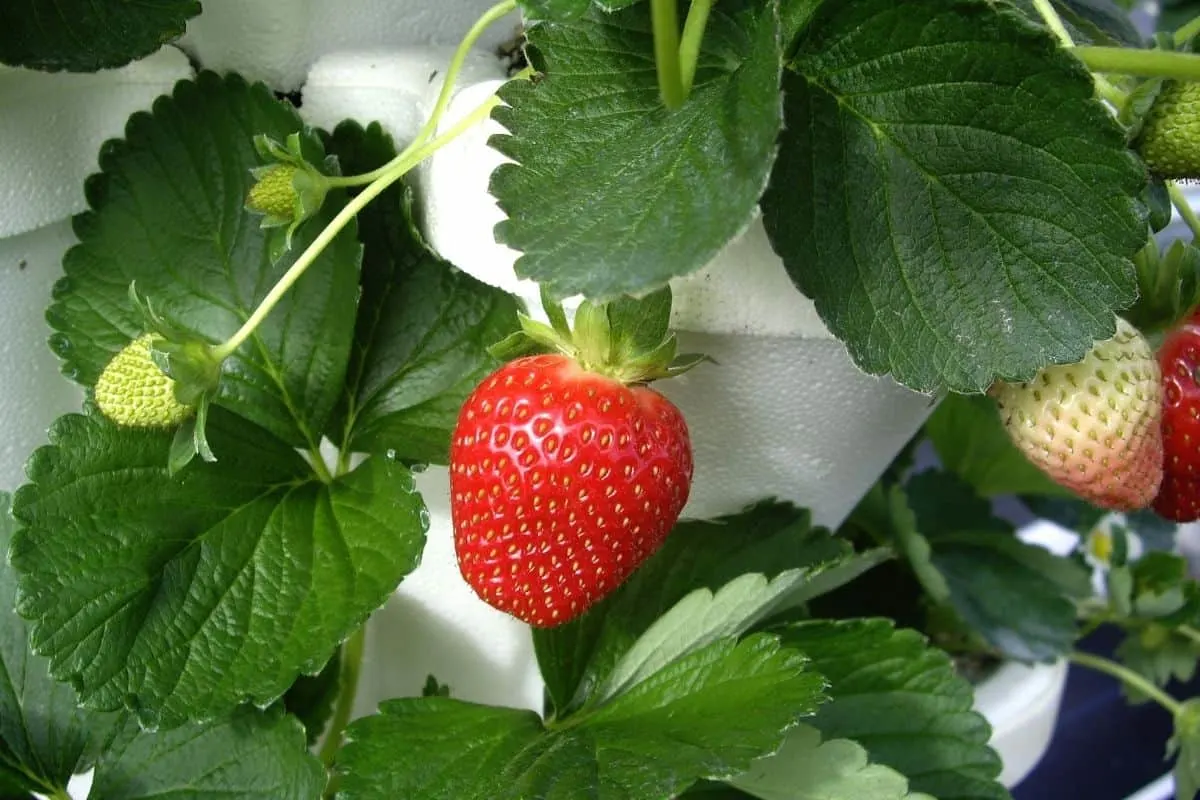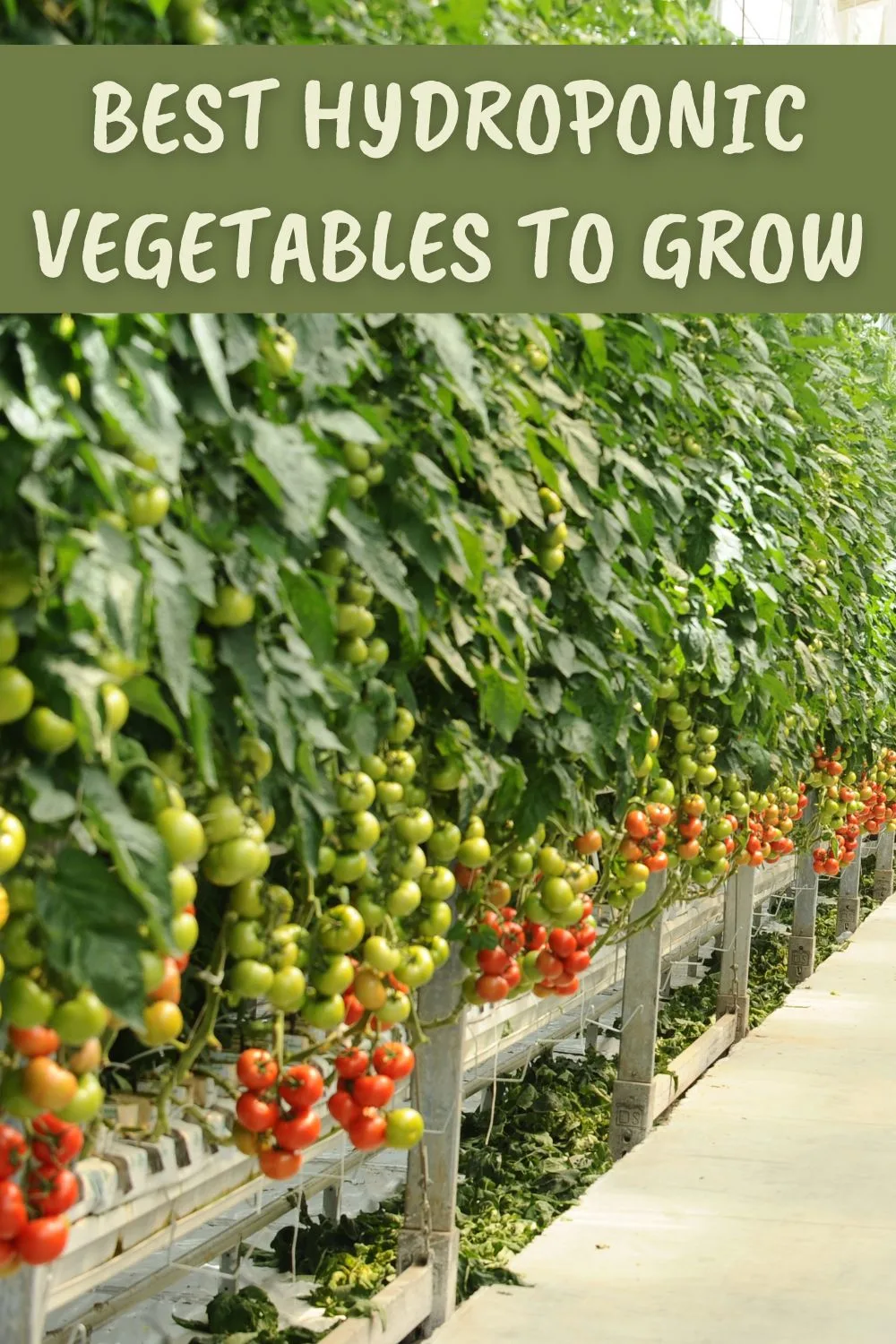Are you looking for the best hydroponic vegetables to grow, so you can have a starting point? Hydroponics is a wonderful way to grow your vegetables. Hydroponic vegetables are grown without soil, using mineral-rich water and artificial lighting instead.
This type of farming has many benefits, including a reduced need for pesticides and decreased water consumption. However, it can be difficult to know which varieties are best suited for the hydroponic environment so that they flourish and produce high yields of fresh food all year round!
Our Beginner’s Guide To Hydroponics is on sale for a short time. Check it out!

What Are Hydroponic Vegetables?
Hydroponic vegetables are grown without soil, using only water and nutrients. This method of gardening has many benefits, including faster growth rates. The benefits of growing hydroponic vegetables also include the fact that they can be grown year-round, they do not require the use of pesticides, and they have a higher yield than soil-grown vegetables. Some of the best hydroponic vegetables to grow include lettuce, tomatoes, cucumbers, and peppers. What types of veggies should you try to grow with this method?
Some popular options for hydroponic vegetables
If you’re interested in growing hydroponic vegetables, here are some of the best options to consider:
- Lettuce is one of the most popular hydroponic vegetables and for good reason. It’s fast-growing, easy to care for, and can be harvested within just a few weeks. Check out my FREE plans for a hydroponic lettuce raft system.
- Tomatoes are another popular hydroponic crop. They don’t require as much attention as some other vegetables, and they produce an abundance of fruit. Here’s how to grow hydroponic tomatoes.
- Cucumbers are another easy-to-grow option. Hydroponic cucumbers can be harvested within two months, and they’re perfect for salads or pickling.
- Peppers are another versatile option for hydroponic gardens. They can be used in a variety of dishes, and they’re relatively easy to care for.
While there is admittedly a learning curve to hydroponics, the benefits can definitely make it worth the time it takes to learn. Let’s take some time to look more deeply at the benefits of this type of vegetable gardening.
Benefits of Hydroponic Gardening
Hydroponic gardening has a number of benefits over traditional gardening or in addition to traditional gardening. For one, it is much easier to control the environment in which plants are grown. This means that hydroponic gardeners can more easily control factors such as temperature, humidity, and light. You’re not just at the mercy of whatever kind of weather or temperature/climate conditions exist in your area.
If you’re new to hydroponic gardening, check out my guide for beginner hydroponics.
Additionally, hydroponic gardens can be set up anywhere – even indoors – making them perfect for those with limited space. Many people like to set them up in greenhouses or garden houses on their property, allowing them to most space and control to do their gardening on their terms. Perhaps the biggest advantage of hydroponic gardening is that it can be done indoors, making it possible to grow plants year-round in any climate. Just think – you can grow all the veggies you want and enjoy them in your family meals.
Hydroponically grown plants also tend to mature faster than plants grown in soil, due to the increased availability of oxygen and other plant growth factors. Hydroponic vegetables are often more nutritious than their soil-grown counterparts due to the higher concentration of nutrients in the water solution.
Finally, because hydroponically grown plants do not rely on soil for nutrients, they are less susceptible to pests and diseases. As a result, hydroponic gardening is a great way to produce healthy, vibrant plants.
Are Hydroponic Vegetables Seasonal Crops?
The answer is surprisingly simple: most hydroponic farmers use a process known as “crop cycling.” This involves growing a different crop in the system every few weeks or months. By carefully monitoring conditions such as temperature, humidity, and nutrient levels, hydroponic farmers/gardeners are able to produce a wide variety of seasonal vegetables all year round. So even though hydroponic vegetables don’t rely on the changing seasons for cues to grow, they can still be considered seasonal crops. Let’s look into this further.
Do you need to plant your hydroponic vegetables according to the seasons?
If your hydroponic vegetable garden is going to spend all its days inside, in air-conditioned comfort, then the crops you grow won’t need to be matched to the seasons. After all, without the changing of the seasons to cue plant growth, how can farmers know when to plant new crops? Well, you can use crop cycling to mimic this.
Granted, you’ll have to provide light, humidity, and the proper temperature range, but with a little knowledge and diligence, you can grow cool or warm-season crops year-round… one of the beauties of the hydroponics method.
What is crop cycling?
Crop-cycling is the practice of growing multiple crops in the same space over the course of a year. This type of rotation can help to improve yields and prevent pests and diseases. Crop cycling is an excellent way to make use of limited space, and it can be a great way to ensure a steady supply of fresh produce. If you’re going to grow your own veggies at home, you can also use crop cycling to help you have the veggies you need at the times of the year when you need them the most.
There are a few different ways to cycle crops in a hydroponic system. One method is to simply remove all plants at the end of each harvest and replant them with a new crop. Another option is to stagger planting times so that different crops are harvested at different intervals. Whichever method is used, crop cycling can help to improve the overall health of a hydroponic system.
Pick strawberries in your basement while a snowstorm rages outside!

With hydroponics, you are not bound by the weather outside, which is one of the main appeals to it. However, even with air conditioning and central heat, most of us tend to keep our homes on the cool side in the winter (68-75° ) and a little warmer in the summer months (78-82° ) so this is something to consider when choosing your crops and how and when you will grow them.
If you cannot provide adequate heat or air conditioning to the grow room, or the unit will spend at least some of the year out on your patio, or… if you have graduated to a greenhouse (nirvana!), then don’t fight nature. Plant your crops according to the seasons.
The Hydroponic Growing Seasons
Here’s a list of vegetables well-suited to hydroponics, and when to plant them (in North America).
Warm weather crops
Start seedlings in March-April, transplant in May. Done by late August. Here’s what they need:
- Keep daytime temp 70-80° and nighttime 60-70°
- Max temp = 90°
- 3-4 feedings per day during the summer growing season
The best warm-weather hydroponic crops are:
- tomatoes
- peppers
- eggplants
- cucumbers
- green beans
Cool season crops
There are two cool weather growing seasons: early spring (February) and early fall (September).
Here’s what these cool-weather crops need:
- Daytime temps 60-70° and nighttime 50-60°
- Minimum temp = 40°
- 1-2 feedings a day in cool weather
The best cool-weather hydroponic crops are:
- broccoli
- bok choy
- cauliflower
- cabbage
- lettuce
- all types of peas
- green onions, leeks, and chives
- spinach
- radishes
- Swiss chard
Do you need separate gardens for different crops?
Sometimes, yes. It’s a good idea to grow lettuce and herbs separate from the tall tomato, pepper, and cucumber vines.
Why?
- the taller plants will shade the lettuce and herbs and they won’t receive enough light
- lettuces are quick-growing plants, harvested regularly, while the vining crops are slow growers and may get in the way of frequent harvesting of lettuce
- lettuces do not require the HID lighting necessary for fruiting plants: save the expense of HID for more fruiting plants. Use T-5 fluorescents for lettuce.
- lettuce also enjoys a lower EC (nutrient concentration) than tomatoes, peppers, and cukes
Herb lovers
Do you use a lot of herbs in your cooking recipes? We also advocate a completely separate hydroponic herb garden for your kitchen. Herbs are a long-term growing system that should not be disturbed by quick-growing vegetable crops. Keep herbs in your kitchen for easy access to cooking.
A hydroponic herb garden is a great way to grow fresh herbs indoors all year round. This type of gardening is very efficient, as it uses less water and space than traditional gardening. Hydroponic herb gardens can be set up in any sunny location, and they are easy to maintain. Simply supply the plants with water and nutrients, and they will thrive. Herbs grown hydroponically tend to be more flavorful than those grown in soil, making them perfect for use in cooking and baking.
Common Mistakes Made with Hydroponic Vegetable Gardens
One common mistake is not providing enough light for the plants. Hydroponic plants need just as much light as soil-grown plants, so make sure to give them plenty of bright, direct sunlight. Another mistake is overwatering the plants. Hydroponic roots are very sensitive to waterlogging, so it’s important to only water them when the roots are dry. Overwatering can lead to root rot, which can kill the plant.
Lastly, forgetting to fertilize the plants is a common mistake in hydroponic gardens. Plants grown in soil get their nutrients from the soil itself, but hydroponic plants need to be fertilized regularly with a water-soluble fertilizer in order to thrive.
Here are some things to avoid:
- Ignoring pH levels in the solution
- Not maintaining proper temperature
- System leaks
- Buying cheap or not enough lighting systems
- Not monitoring plant health regularly
- Using the wrong type of fertilizer
- Not having proper oxygen to your plants
By avoiding these common mistakes, you can create a healthy and successful hydroponic garden. While this type of gardening doesn’t have to be complicated, it is very important to learn how to do it well before you just dive in.
Best Hydroponic Vegetables To Grow FAQ
What are some other questions people often have when growing veggies hydroponically?
What is the easiest vegetable to grow hydroponically?
One of the easiest vegetables to grow hydroponically is lettuce. Lettuce grows quickly and does not require a lot of space. Additionally, it is relatively tolerant of changes in temperature and light level. As a result, it is an ideal plant for beginners to grow hydroponically. It’s also a really common veggie with a lot of uses in the kitchen.
What vegetables are good for hydroponics?
In addition to lettuce, tomatoes and cucumbers are also relatively easy to grow hydroponically. These vegetables are more sensitive to changes in their environment, but they can still be successfully grown with hydroponics.
What is the most profitable hydroponic crop to grow?
While there are many contenders, leaflets typically point to leaf lettuce as being the most lucrative option. This is due to the high demand for lettuce, as well as its relatively low cost of production. As a result, farmers who are looking to make a profit from hydroponic farming are advised to focus on leaf lettuce. If you’re just looking to save some money on your own gardening, any veggies you choose to grow this way will pay off for you in the long term as well.
What cannot be grown hydroponically?
Carrots, turnips, potatoes, and beets are examples of root vegetables that do not do well. Hydroponic systems do not provide the right conditions for veggies like carrots or potatoes to thrive. These vegetables require loose, sandy soils in order to develop properly. In addition, root vegetables are not well suited to hydroponic systems because they need room to spread out and develop extensive root systems. As a result, hydroponics is best suited for plants that do not require large amounts of space to grow.
Whether you’re an experienced hydro gardener or a beginner, there’s a hydroponic vegetable that’s right for you. With a little care and attention, you can enjoy fresh, nutritious vegetables all year round. Now that you know more about the types of vegetables you can grow in a hydroponic garden, all that’s left is to get started. Which vegetables are you most excited about?

Stella and Simon, a couple of back-to-the-land, baby boomer enthusiasts, have embraced the world of homemade hydroponics on their three-acre plot of Florida piney woods. Their journey began after drawing inspiration from Epcot Center’s hydroponics exhibit, and they've delved into various hydroponic methods, experimenting with different systems, configurations, and crops both indoors and outdoors. Their expertise culminated in the creation of an innovative homemade hydroponics greenhouse, documented in their book, Simon’s Super Simple On-the-Grid, Off-the-Grid Hydroponic/Aquaponic Survival Greenhouse.


Incredible Hydroponic Backyard Fence Garden Idea
Thursday 10th of November 2022
[…] Here’s a list of the best hydroponic vegetables to grow. […]
Complete Hydroponic Kits For Growing Vegetables Indoors
Thursday 10th of November 2022
[…] Check out my list of the best hydroponic vegetables to grow. […]